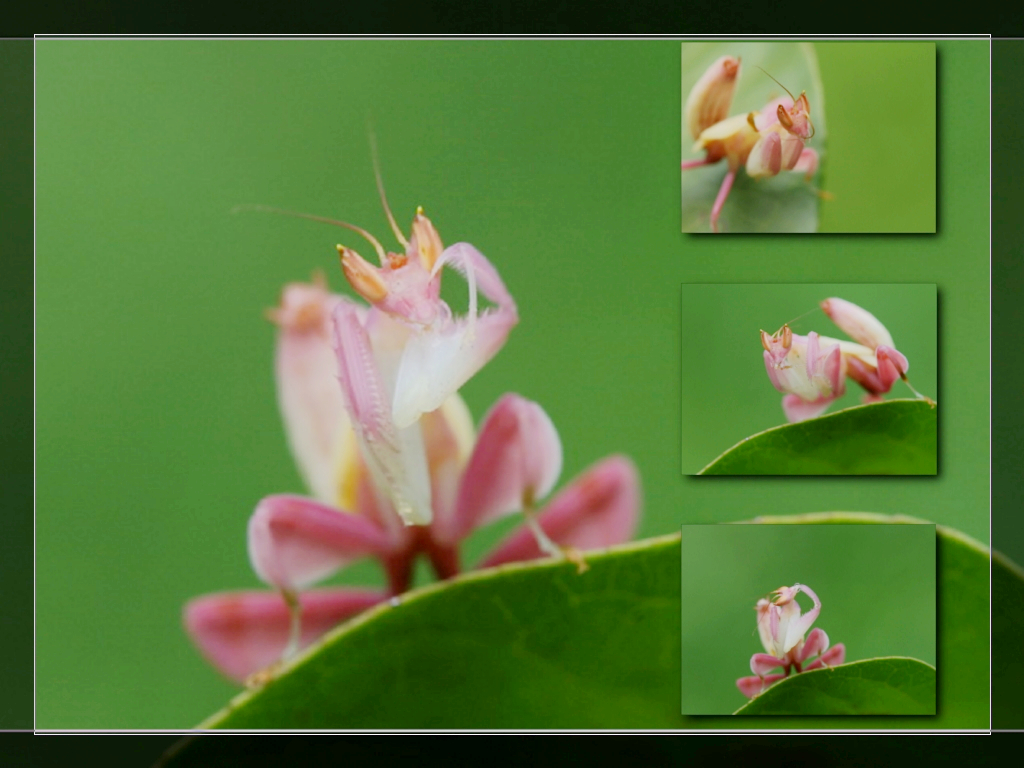Hymenopus coronatus (known by a variety of common names including Malaysian orchid mantis, Malaysian orchid praying mantis, pink orchid mantis and orchid mantis) is a
mantis from
Malaysia,
Indonesian, and
Sumatran rain forests. These mantises thrive in humid, warm areas of south Asian rain forests. These mantids can be found on
papaya trees,
orchids, or
frangipani trees with flowers. In captivity, the nymph's diet can consist mainly of
fruit flies, but they will eat other small insects. Adults will eat anything they can catch; this includes small
lizards,
bees without stingers,
house flies,
butterflies,
moths and other
non-venomous flying insects. Although primarily carnivorous, orchid mantises have been observed eating little bits of banana, this behavior is thought to balance the mantis's vitamin intake through the juices of the banana (which are rich in potassium).
When threatened, the mantis either tries to confuse the predator, or scare it. If lifted into the air, they become vicious, attempting to bite everything within reach. Their predators include lizards, geckos, jumping spiders, toads, birds, rodents, bats, and shrews.
This species is characterized by brilliant and beautiful coloring and unusual structure; their four walking legs resemble flower petals, and the coloration of the bodies tends to match the environment in which they were raised. H. coronatus shows some of the most pronounced sexual dimorphism of any species of mantis; the males are generally less than half the size of the females. Young nymphs resemble ants with orange and black bodies. As the mantis grows in its environment, its color comes to more closely match the coloration of its surroundings with each passing molt. It has been theorized that humidity and intensity of light play a large role in the final coloration of the adult.
Source: Hymenopus coronatus

